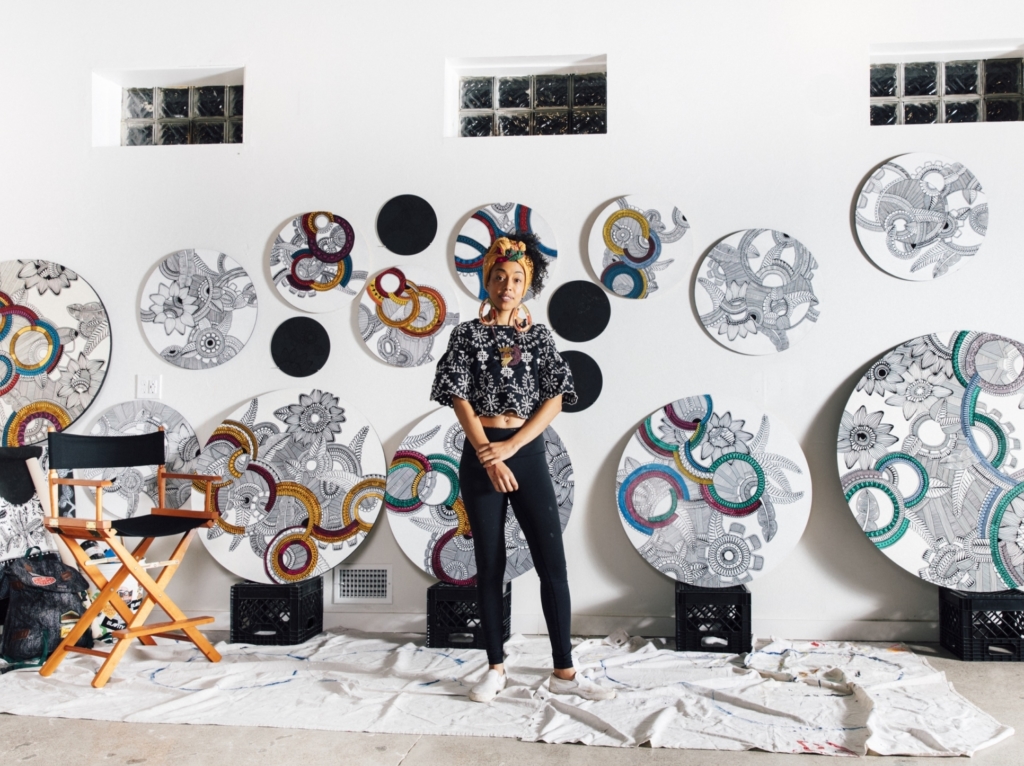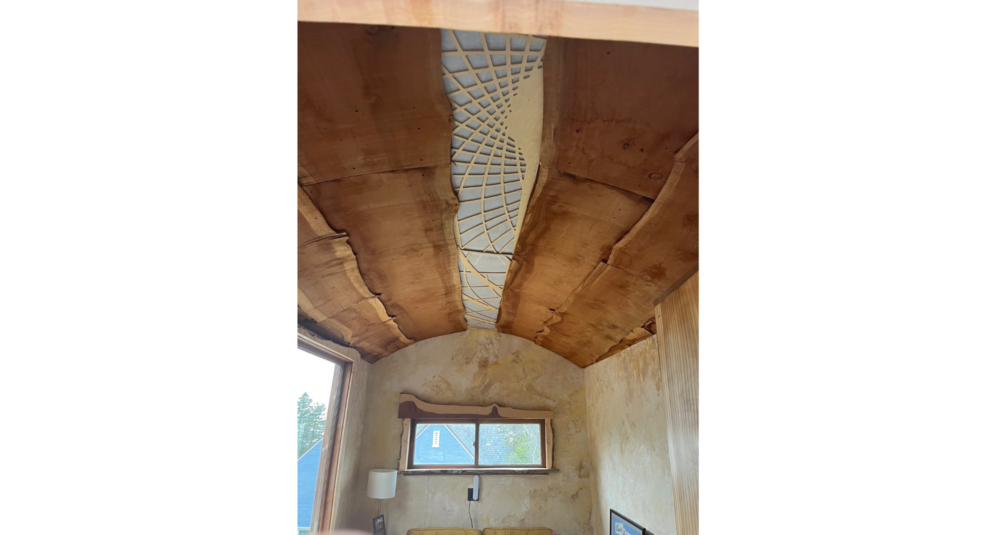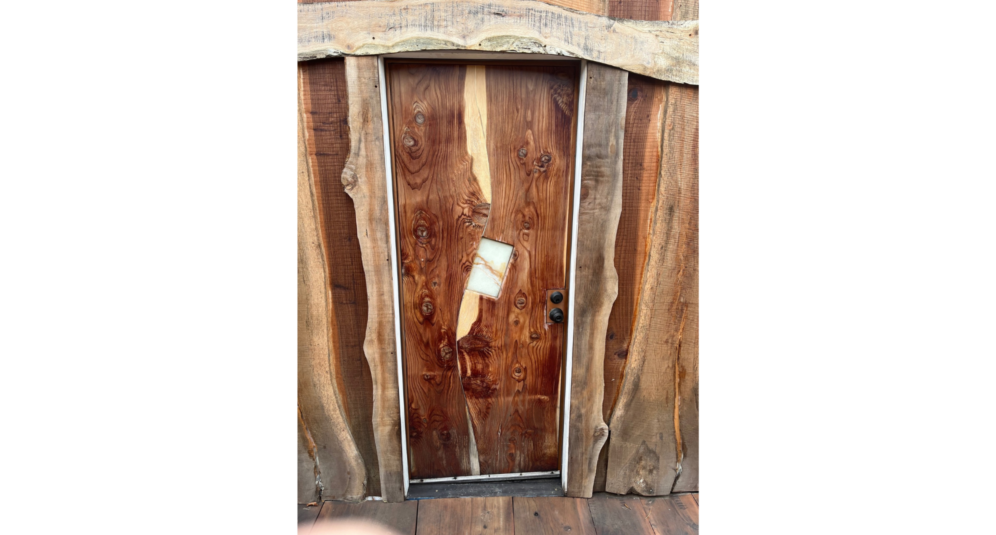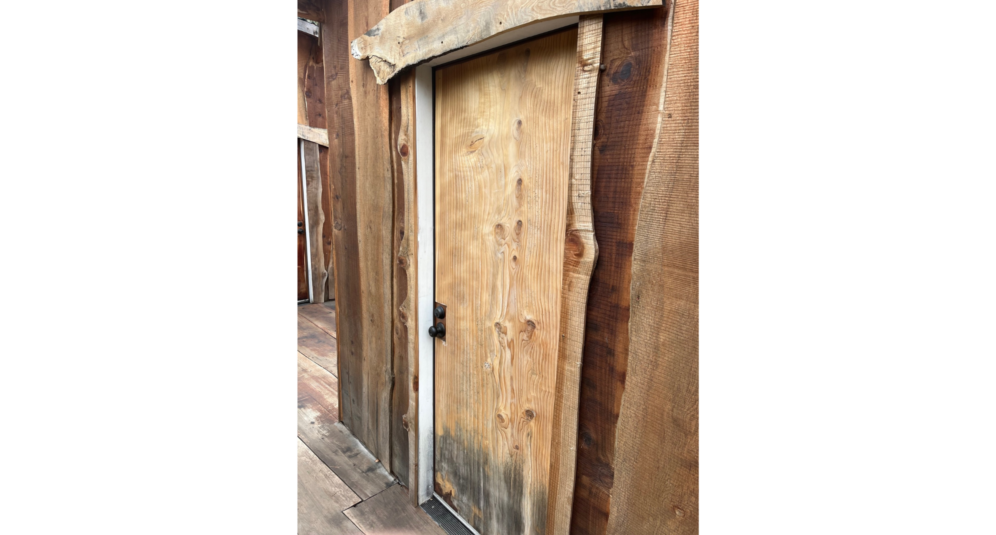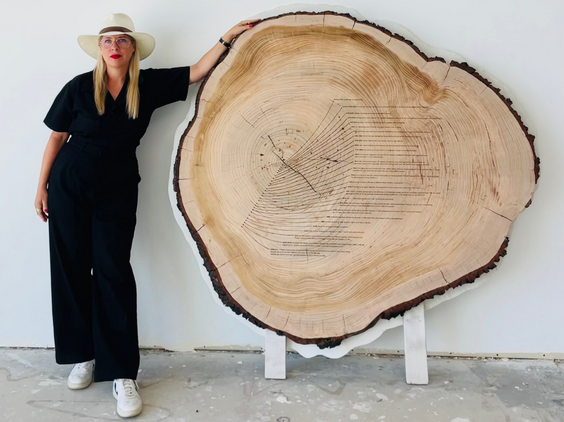My Tu BiShvat Pandemic Freakout Tale
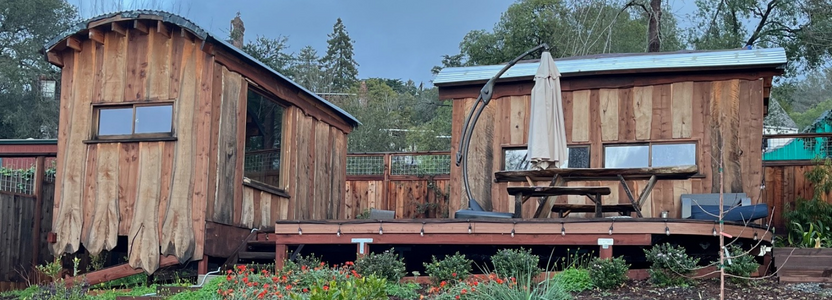
I had never really thought much about Tu BiShvat and the ancient Jewish connection to trees. Growing up, dinner discussion was about landlords, not about connection to the land. Part of the legacy of Jews like me who grow up renters in urban settings – I’m from Washington Heights in New York City – is that we aren’t handy. My experiences didn’t lead me to think of the external world as changeable. It simply was. Before the pandemic, one of my biggest accomplishments was to be the first person in my family (that I knew of) to own a home.
But somehow during the pandemic, I, a completely non-handy urban Jew wound up building an office in my backyard from found wood and discovering my own reverence for trees and the revival of nature.
I live on a hill in Berkeley, and my uphill neighbor asked if I would cut down some trees on my property. My wife is a garden teacher and we care about trees, so I initially said no. But we found out that something called the “bark beetle” was plaguing old Monterey Pines like the ones lining the back of my property, and I could see one was dying. Upon inspection, four trees were infected and would have to come down.
I re-engaged with the neighbor who wanted the trees gone and agreed to allow the trees to be cut down on the condition that the arborist (a fancy name for the “tree guy”) would let me know what he did with the trees. This coincided with “remote learning,” which for this parent of a 6 and 8 year olds was synonymous with “shit show.” I fault no one. But the noise in our house was reaching an unsustainable level, and I couldn’t get anything done. I didn’t realize it at the time, but I had some vague sense that maybe this tree project was connected to an escape hatch I knew I needed from the pandemic stress. After talking to the arborist, I got the story about what he did with the trees: most of the wood that isn’t usable for building or burning is mulched. But any wood that is usable – redwood, cedar, and oak in Northern California are what comes to mind – were brought to the tree guy’s crazy friend Darrel. Something made me ask for Darrel’s number.
It took me a few months of calling before Darrel responded. He had five acres of “undeveloped land” in El Sobrante, and said I could come out and check it out. I went, and it was wild: Somewhere between 2 – 4 school buses with people living in them were spread out on the property, and various iterations of something the various squatters/builders/ residents kept calling “natural building” experiments were going on. Lying all over the place were logs – some from the tree guy, others from various other places, and all with a story.
It was this that struck me, the lifetime of stories ingrained in the wood. One was a beautiful redwood that had been leaning over in front of an elder care center and was removed for safety reasons. So sad that it had been cut down with all the memories it held. But there was something thrilling about it making its way to Darrel’s property where he could give it a second, useful life. But what? There were big logs, small logs, straight logs, curved logs. Many of them were sliced into rounds; some were sliced into long board-like slabs. They looked like nothing to me at first. I really had to train myself to see the logs not as trash. But as Darrel talked about the beauty of a tree and the characteristics of the wood in loving ways, I slowly started to see it and appreciate the stories in them.
Those stories brought me back. I milled some logs with him, which was thrilling as I saw the logs turn into boards. It was a log with the grain of the wood exposed. Sometimes it took my breath away, how great it was. He taught me how to sand the wood, doing progressive passes with finer and finer sandpaper. I learned to love a tool called a “random orbital sander” in a way I hadn’t ever loved tools before (possibly because I had worked so infrequently with ANY tools to this point).
The wood – particularly redwood – had these beautiful…gnarls? Knots? Imperfections that looked like a Rorschach Test and that I could get lost in. I’d just stare at the lines – the heart of the wood, the dermis on the outside that was lighter than the center. I was fascinated by the way trees’ wood split apart as they dried. Darrel described why some boards split in the following way: The trees were “using enormous amounts of energy to hold it together,” and “fighting enormous tension to split” while they were alive and then the splits being “letting it go.”
Poetry! Poignant! Darrel didn’t overdo the metaphors; this was just how he thought of wood. Connecting and understanding the wood was clearly helping me as we navigated the pandemic and lockdown. A friend came over who was talking up the virtues of microdosing psychedelics. I started speaking of my joy from working with wood with the same reverence. I pronounced working with wood “Better than taking mushrooms!” to my microdosing friend.
 I started to dream about building stuff. I am not handy, but I have always loved design. I worked with Darrel on a vision I had to design and build a few offices in my backyard with a redwood deck connecting them out of reclaimed logs on his property. I became obsessed; I milled all the wood with Darrel, and arranged for actual handyman – those with real building skill – to hammer it together. I envisioned the joisting of the deck being as irregular as the wood it was built with. I liked the whimsical feel of how the planks of wood on the deck fit together.
I started to dream about building stuff. I am not handy, but I have always loved design. I worked with Darrel on a vision I had to design and build a few offices in my backyard with a redwood deck connecting them out of reclaimed logs on his property. I became obsessed; I milled all the wood with Darrel, and arranged for actual handyman – those with real building skill – to hammer it together. I envisioned the joisting of the deck being as irregular as the wood it was built with. I liked the whimsical feel of how the planks of wood on the deck fit together.
One of the people living in a school bus on Darell’s property – a wonderful woman named Darles, who was from Utah and specialized in earthen floors and plaster – did the walls in a style that fell out of favor in the 1920’s because it was too labor intensive. Like seeing the grain of the wood, I loved the depth of texture in the walls.
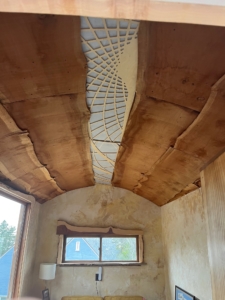
Darrel had the idea for the skylight, which casts amazing shadows that move through the office during the day and keep the place bright and cheerful. The roof is meant to look like boards randomly stacked on each other to create texture and fun.
One of the doors is built from a single slab of wood from a tree that fell down, the other is from a giant Sequoia that fell down and no one could think of anything to do with. Look at the amazing color of the Sequoia door – it’s almost purple! The red parts on the outside are the “heartwood” and the line in the middle is the dermis (or “skin”) where we centered a piece of quartz that Darrel found in Oregon.
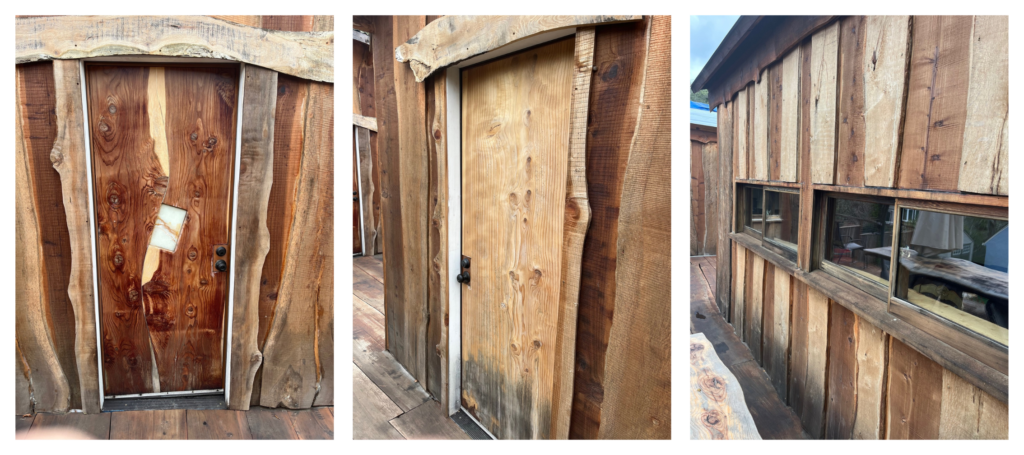
The outside walls and roof are meant in the “board and batten” style, casually stacking rough redwood and cedar, like the interior roofs.
Now, I sit among the trees every day.
Jacob Kornbluth is an Emmy-winning director of TV, film, and theater. He lives in Berkeley, CA with his wife and two kids. Find out more at jacobkornbluth.com.

